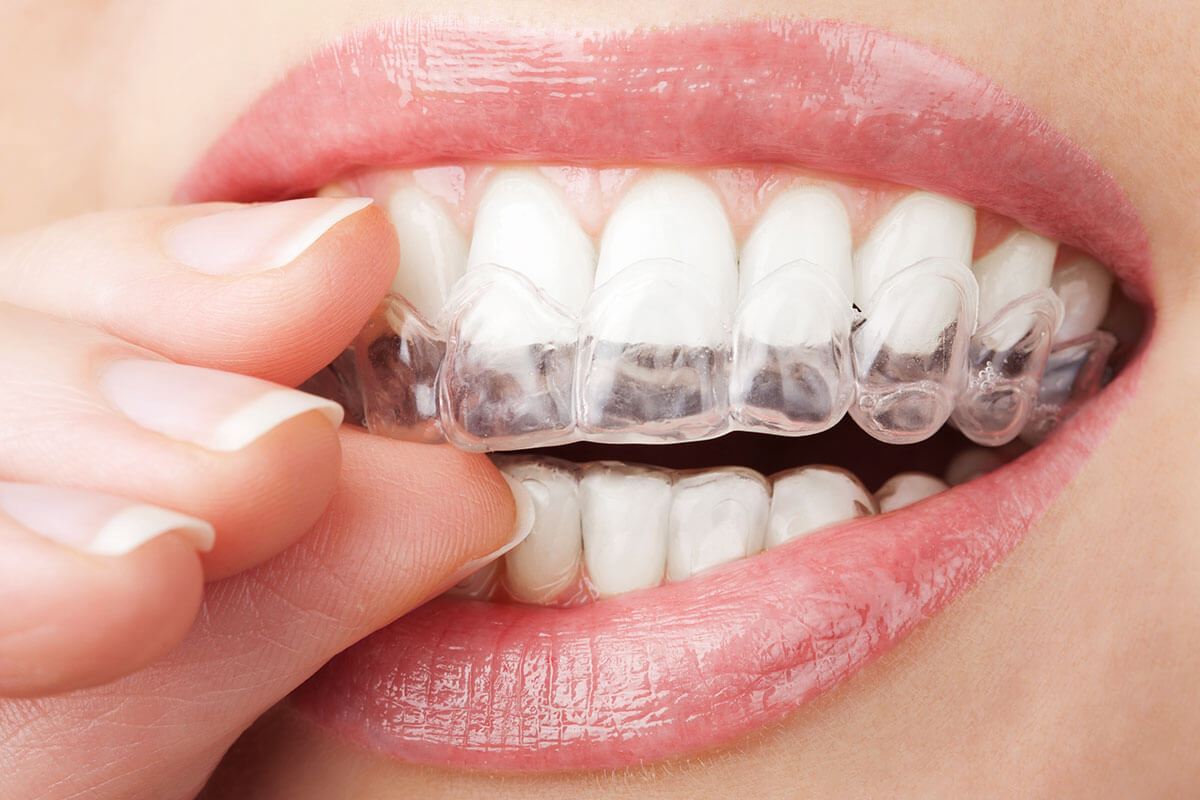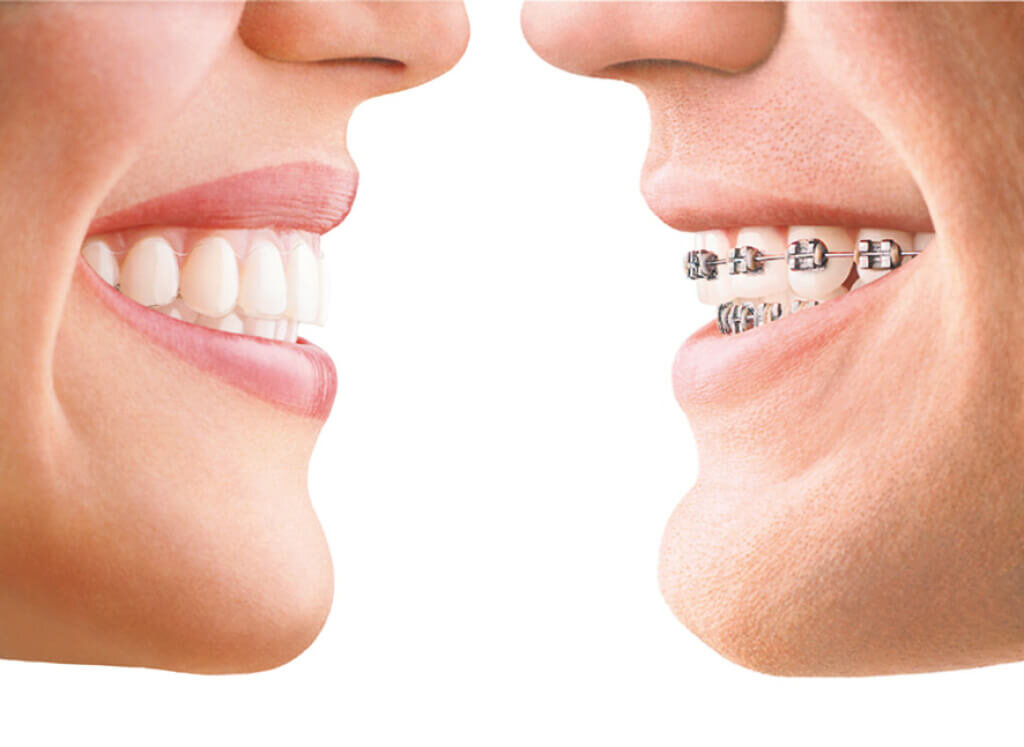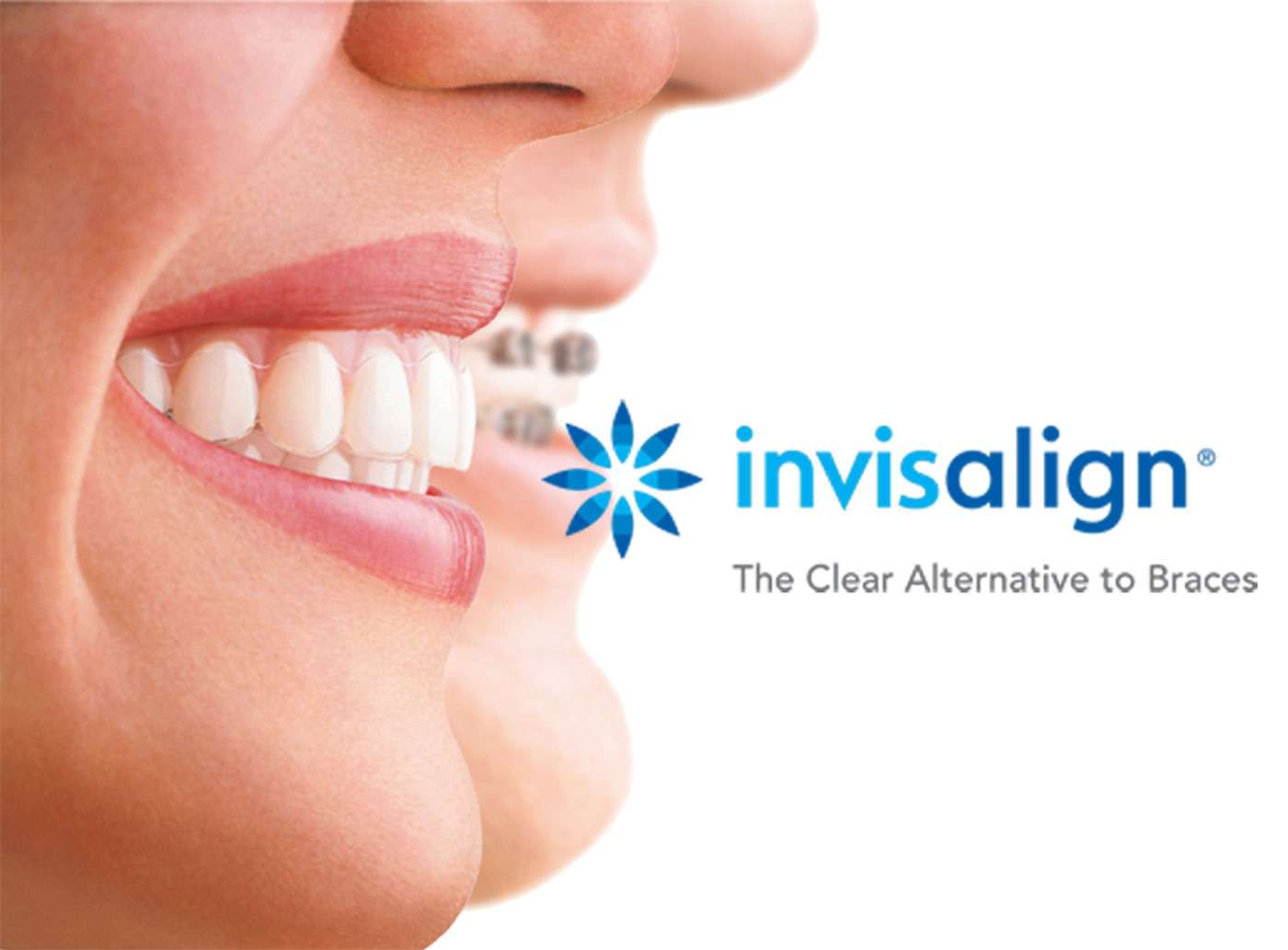Invisalign vs. Conventional Braces: Which Option Is Right for You?
When taking into consideration orthodontic therapy, the choice between Invisalign and typical dental braces presents a number of important aspects that warrant cautious examination. Invisalign supplies a very discreet option with removable aligners, while typical braces give a much more visible yet efficient solution for extreme misalignment. Each choice includes unique advantages and disadvantages related to appearances, convenience, treatment duration, and expense. Understanding these nuances is vital for making an informed choice that straightens with your personal preferences and lifestyle. The question continues to be: which choice will finest satisfy your orthodontic needs and expectations?
Overview of Treatment Choices

On the other hand, traditional dental braces are composed of metal brackets and cords that are bound to the teeth. This approach applies continuous stress in time to attain placement. While reliable for complex orthodontic issues, standard dental braces require regular check outs for changes and can pose obstacles in keeping oral hygiene because of the problem of cleansing about braces and wires.
Both choices have their qualities, and the choice frequently rests on certain oral conditions, lifestyle preferences, and individual conformity. Inevitably, seeking advice from an orthodontic professional is vital for identifying the most appropriate therapy plan tailored to specific demands. Comprehending the nuances of each choice can dramatically influence the overall success of orthodontic treatment.
Visual Considerations
A significant element influencing the option in between Invisalign and typical braces is the aesthetic appeal each treatment offers. Invisalign aligners are crafted from clear plastic, making them essentially unnoticeable when worn. This very discreet look is especially attracting adults and teenagers that may really feel self-conscious regarding their orthodontic treatment. The capacity to preserve a natural smile throughout the alignment procedure can substantially improve the client's confidence in specialist and social setups.
In comparison, typical braces consist of metal brackets and wires, which can be more visible. While improvements in orthodontic modern technology have led to the development of smaller braces and colored elastics, standard dental braces still keep an even more conspicuous account. For some people, the visibility of braces may deter them from looking for essential treatment.
Inevitably, the option between Invisalign and typical braces might depend upon individual preferences pertaining to visual appeals. Patients that prioritize discretion often lean toward Invisalign, while those that are much less worried concerning exposure might go with traditional dental braces. Recognizing the aesthetic ramifications of each choice is important for making an educated decision that aligns with one's way of life and preferences.
Comfort and Convenience

In terms of comfort, Invisalign aligners are removable, enabling individuals to appreciate their favored foods without limitation and maintain ideal oral hygiene. Cleaning and flossing are simplified, as the aligners can be taken out during these routines, whereas conventional braces call for cautious navigating around cables and braces.
In addition, Invisalign's modern system enables fewer orthodontic sees. Individuals usually obtain several sets of aligners simultaneously, which can simplify the therapy procedure and lower time invested in the orthodontist's chair. In comparison, conventional braces require normal modifications, making them much less convenient for those with hectic schedules. Invisalign. Generally, the comfort and convenience of Invisalign make it an attractive choice for numerous individuals looking for orthodontic therapy.
Therapy Duration and Effectiveness
While both Invisalign and traditional dental braces important source work in dealing with dental imbalances, the period of treatment can vary substantially in between the two options. Usually, Invisalign therapy can take anywhere from 12 to 18 months, depending upon the complexity of the case. The clear aligners function by slowly moving teeth right into their wanted placements, and normal follow-ups with an orthodontist assistance ensure progression continues to be on the right track.
In contrast, traditional braces commonly call for a longer commitment, generally ranging from 18 months to 3 years. This results from their fixed nature and making use of wires and brackets, which can be more efficient for serious misalignments and complex cases (Invisalign). The treatment effectiveness of standard dental braces is well-documented, as they enable precise adjustments and greater control over tooth activity
Ultimately, the option in between Invisalign and standard dental braces may pivot on both the awaited therapy duration and the details oral problems available. Consulting with an orthodontist is crucial, as they can supply tailored recommendations based upon specific requirements, making sure the selected approach straightens with wanted durations and end results.
Expense Contrast and Insurance Policy Alternatives
Cost plays a significant duty in the decision-making process for individuals considering orthodontic treatment, whether going with Invisalign or conventional braces. Typically, the price of Invisalign arrays from $3,000 to $8,000, while conventional dental braces normally cost between $2,000 and $6,000. Elements affecting these prices include the intricacy of the case, the duration of therapy, and geographical location.
Insurance insurance coverage can significantly affect out-of-pocket expenses. Several oral insurance plans offer partial insurance coverage for orthodontic treatments, but the specifics can differ commonly. It is crucial for patients to examine their insurance coverage to identify the extent of protection for either choice. Generally, standard braces may be extra regularly covered by insurance plans contrasted to Invisalign, which some insurance firms categorize as a cosmetic procedure.
In addition, numerous orthodontic methods use flexible layaway plan, making both therapy alternatives a lot more easily accessible. Patients need to ask about potential financing alternatives you could check here and price cuts for in advance payments. Assessing the complete cost, consisting of insurance coverage advantages and settlement plans, is essential for making an informed decision that aligns with both aesthetic choices and budget factors to consider.

Conclusion
In recap, the selection between Invisalign and conventional dental braces depends upon numerous aspects, including visual choices, convenience, therapy duration, and expense. Invisalign link offers a very discreet, detachable alternative that helps with dental health and nutritional versatility, while standard dental braces might be preferable for complicated dental problems and usually come with a lower price point. Inevitably, examination with an orthodontist is necessary to assess specific conditions and identify the most appropriate treatment alternative for attaining optimal oral placement.
When considering orthodontic therapy, the selection between Invisalign and traditional braces provides numerous vital variables that warrant mindful examination.Comparing Invisalign and standard dental braces exposes unique therapy alternatives for orthodontic adjustment.While both Invisalign and typical dental braces are reliable in remedying oral misalignments, the period of treatment can differ considerably between the 2 alternatives.Price plays a considerable duty in the decision-making process for people taking into consideration orthodontic treatment, whether deciding for Invisalign or traditional dental braces.In summary, the option in between Invisalign and typical braces hinges on multiple aspects, including visual preferences, convenience, treatment duration, and price.